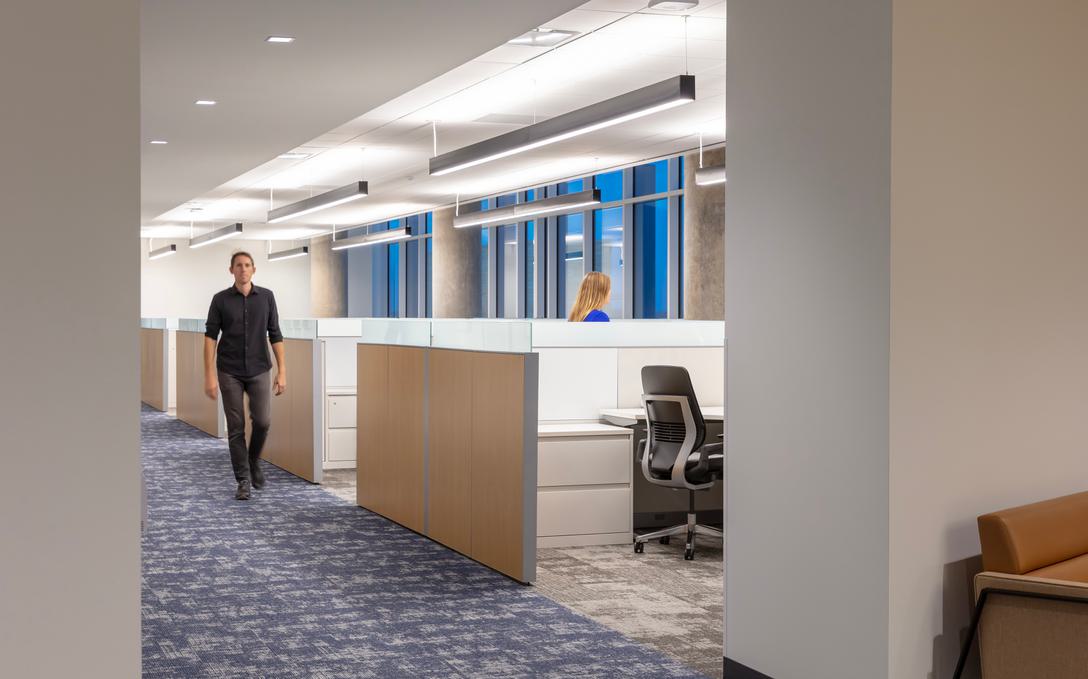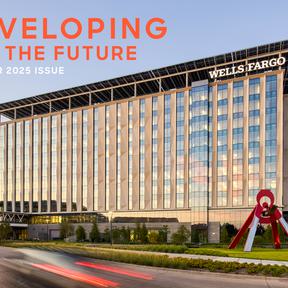
Return to Work Efforts Headed in the Right Direction
10/04/23 | Thought Leadership

By Michael Alost, KDC Senior Vice President / Development
Building owners and business leaders would love to put the memories of 2020 and the subsequent COVID-19 pandemic fallout behind them. However, the trickle-down effects from business shutdowns and remote work continue to impact commercial real estate across the board. But at KDC, we are starting to see some positive news on the horizon.
Since July, office occupancy in 10 major U.S. metros surpassed 50 percent, rising 3.4 points to an average of 50.3 percent after the Labor Day holiday, according to a Kastle Systems report. Three Texas metros had the highest occupancy, with Houston leading the list with a 61.6 percent occupancy, up 1.9 percent from the previous week. Austin had a 59.3 percent occupancy, up 1.7 percent, and the Dallas metro saw a 2.8 percent increase to a 54.9 percent occupancy, according to a Commercial Property Executive article.
OFFICE OCCUPANCY ON THE RISE
The good news continues as 90% of companies plan to implement return-to-office policies by the end of 2024, according to a report from Resume Builder, which surveyed 1,000 company leaders. Nearly 30% say their company will threaten to fire employees who don’t comply with in-office requirements. The renewed push to end remote work comes as more CEOs openly acknowledge their disappointment in work-from-home, arguing that productivity, collaboration and employee engagement all suffer without the personal interface of an office environment.
At the beginning of COVID-19, tech companies were the first to embrace work from home, and some even said they would not require in-office work in the future. Now, however, most have changed their strategies. We see leading tech companies implementing return-to-office requirements, and as employment leaders, these tech companies are shaping trends for other information-based companies that will follow suit.
This is significant and indicative of where businesses - from mom-and-pop operations to Fortune 100 companies - will be moving. Another survey stated that more than one-half of all respondents require some or all of their employees to work in person, while 39% plan to do so by the end of 2024, according to a recent Bisnow article.
Among those companies planning to implement return-to-office mandates in 2024, the most popular schedule requires employees to come in three days per week, according to another Bisnow article. But many leading Wall Street employers – from Goldman Sachs to JPMorgan and Blackstone – are mandating a full office return.
This is a positive trend for commercial real estate and office development. However, there are still some concerns about how this will continue to impact office vacancies.
The pandemic brought into question the purpose of a physical workplace. Flex time and remote work, already present in many workplaces, have accelerated and will likely remain a feature of office employment. In the commercial real estate world, we find ourselves still in a sorting-out phase as employers seek a more balanced solution.
Given the importance of personal interaction in business, it would seem these occupancy concerns should have been resolved by now, but that hasn’t been the case. The shortage of skilled workforce combined with the multiple episodes of COVID outbreaks have all contributed to a slow recovery of office occupancy.
What does this slower, measured return to the office mean for commercial real estate? Right now, it means lower occupancy for spaces as well as other pain points, including the cost of employee turnover, as some employees feel less connected to the job and teammates when working remotely. More importantly, it means companies are struggling to sustain their culture, spirit of innovation and market momentum.
Face-to-face interactions are key to helping staff feel more connected, but more importantly, in-person engagement is fundamental to strong business innovation, which is the key to company success and growth. Without frequent in-person contact, employees lose out on institutional knowledge, not to mention the loss of company culture.
People thrive through collaboration with team members. In a Gensler 2023 Global Workplace Survey Comparison, findings highlight that people spend 40% of their time each week collaborating face-to-face (28% of the time) and virtually (14% of the time.)
The study also highlights the powerful interplay between how effective spaces and workplace experiences merge to encourage employees to work together in person to achieve these partnerships in the most impactful ways.
Employees in workplaces that leverage both these components are more engaged, more committed to their organization, more aware of workflows, and have better team relationships and a stronger sense of belonging, the study reports. It motivates the C-suite to take a deep dive into how to make the office relevant again.
At KDC, we use a shared culture to enhance innovation and creativity. We have a mix of workspaces consisting of creative group work, individual work, and spaces to reflect and restore, connect and recharge, which are all vital balanced workplace components.
ENGAGING EMPLOYEES
To grow and prosper, whether as a sole proprietor or a global corporation, every company must be consistently innovating. Plenty of post-COVID studies and research demonstrate how interpersonal engagement drives team members to generate unique and creative solutions. This creativity and innovation build competitive solutions so companies can better serve clients and grow their business.
At KDC, for instance, our business is very collaborative. Our transaction speed requires us to engage directly with one another. We conduct business in rapid succession, whether churning out details on the phone, or running across the hall to consult with a colleague. To keep pace with opportunity, we often walk down the hall to get an answer instead of waiting for an email or call. In-person, creative collaboration is the biggest benefit of being in the office for KDC.
Creativity can result from lunchroom small talk and water-cooler exchanges, as well as from structured work sessions. New ideas and solutions that advance a company’s competitive role in the market are generated from interpersonal exchanges; that kind of organic discussion doesn’t usually occur over a Zoom call.
Ultimately, we believe employees need to be physically engaged with one another, which in turn supports mentoring, training, career growth and maintaining company culture. The real estate business will always be about relationships, whether they be with your teammates or clients.
Highly amenitized office environments with more hospitality-type spaces along with workspace variety are in demand. Added services such as providing meals and recreation, among other offerings, enhance the office experience and help to improve the work-life balance.
KDC is a great believer in building facilities that cater to employees. Additionally, creating company policies that demonstrate the executives and ownership care for their team goes a long way in earning the loyalty that makes the office commute worthwhile. There are many ways to engage meaningfully with your team, from company retreats, volunteering events, or professional development opportunities during the workday, such as lunch-and-learns.
Return to work percentages continue to increase, with Texas and other Sunbelt states leading the nation. Strong business leaders are not waiting for employee sentiment to change; they are proactively making changes to both policy and physical facilities. Competitive companies are driven by innovation and are finding new and creative ways to make the office environment more relevant.
The pandemic was a wake-up call. The office wasn’t always an effective tool. People were coming into the office because that was the expectation, not because employers were effectively creating collaboration or a shared culture. I think that is one reason people have resisted returning to the office. They don’t want to go back to the status quo.
Coming out of this, the C-suite recognizes the workplace needs to be amenity-rich and almost have hospitality-based offerings and aesthetics. Tricks and gimmicks won’t last. The table tennis and golf simulator trends lack appeal. Substantial value is created with a beneficial exchange between people. Managerial mandates nor policy will create a lasting impact.
The most effective company leadership succeeds by examining what has and has not worked for their business and team. We see teams thrive when people return to the office with a shared culture that fosters creativity in a quality environment. We are seeing positive progress in occupancy, but there is more to do when it comes to making the office environment a relevant tool for innovation. Leading companies are returning to work, but full occupancy will take time.




